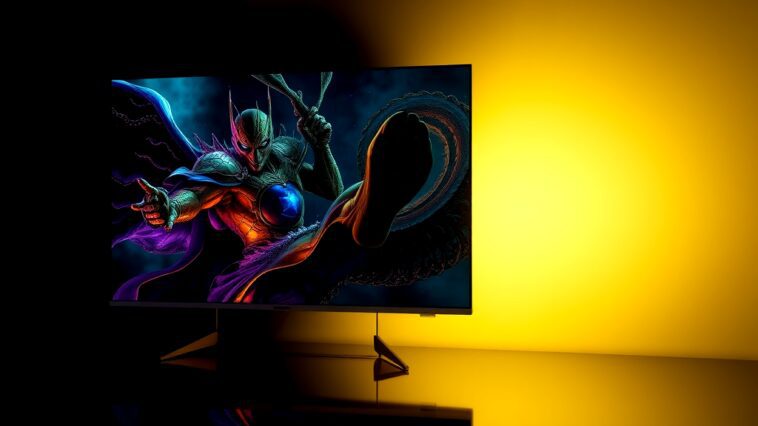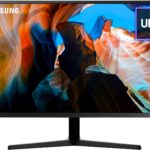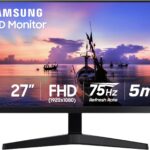When it comes to gaming, having the right technology can make all the difference. One piece of tech that has gained popularity among gamers is G-SYNC. But what exactly is G-SYNC, and how does it enhance your gaming experience? Let’s dive into this topic in detail while keeping everything simple and easy to understand.
What Is G-SYNC?
G-SYNC is a technology developed by NVIDIA that helps synchronize the refresh rate of your monitor with the frame rate produced by your graphics card (GPU). Refresh rate (measured in Hertz, or Hz) refers to how many times per second your monitor refreshes the image displayed on-screen. Frame rate (measured in frames per second, or FPS) indicates how many images (or frames) your GPU generates in one second.
Why Is This Important?
Without synchronization, you may experience problems like screen tearing, where the image on your screen appears disjointed or broken. Imagine you’re playing your favorite racing game: if the graphics card sends frames faster than the monitor can refresh, you might see parts of different frames at the same time. This can make the game look choppy and can ruin your gaming experience.
How Does G-SYNC Work?
G-SYNC solves this problem by allowing your monitor to adjust its refresh rate dynamically. Here’s how it works step by step:
- Dynamic Refresh Rate: If your GPU is generating 60 FPS, G-SYNC adjusts the monitor’s refresh rate to match that 60 Hz. If your frame rate drops to 40 FPS, the monitor’s refresh rate drops to 40 Hz. This means you’re always seeing a smooth and tear-free image.
- Variable Overdrive: G-SYNC also includes a feature called variable overdrive. This means that the speed at which pixels change color is adjusted based on the FPS. This helps prevent issues like ghosting, which is when a trail of a moving object lingers on the screen.
- Low Input Lag: By replacing the traditional scaler in monitors with its own G-SYNC module, G-SYNC monitors often have lower input lag. This means that what you do on your controller or keyboard reflects on the screen almost instantly.
The Generations of G-SYNC Modules
NVIDIA has released several generations of G-SYNC modules. Here’s a quick overview:
- First Generation (v1): This version supports DisplayPort 1.2.
- Second Generation (v1 with HDMI): This one supports DisplayPort 1.2 and HDMI 1.4.
- Latest Version (v2): This module supports DisplayPort 1.4 and HDMI 2.0 and may include features like a cooling fan.
G-SYNC vs. Other Technologies
Now, you might be wondering how G-SYNC compares to other technologies like FreeSync. Let’s break it down:
- G-SYNC: Requires a dedicated hardware module in the monitor. It is validated by NVIDIA and ensures a wider variable refresh rate (VRR) range, which typically means better performance during gameplay.
- FreeSync: This technology is based on an open standard created by VESA. It does not require a dedicated module, making FreeSync monitors generally less expensive. However, the VRR range may not be as wide as G-SYNC, which can lead to stuttering in some cases when frame rates drop.
- G-SYNC Compatible: These are FreeSync monitors that NVIDIA has tested and confirmed to work well with their graphics cards. While they can provide a better experience than standard FreeSync monitors, they still may not match the performance of native G-SYNC monitors.
The Real-World Impact of G-SYNC
Understanding how G-SYNC functions is one thing, but how does it actually improve your gaming experience? Let’s look at a few real-world scenarios.
Example 1: Racing Games
Imagine you’re playing a racing game like “Forza Horizon.” Without G-SYNC, you might experience screen tearing as you speed through the streets, especially if your frame rate fluctuates between 50 and 70 FPS. With G-SYNC, your monitor will adjust its refresh rate to match your frame rate, providing a smooth and immersive racing experience without any visual distractions.
Example 2: First-Person Shooters
In a fast-paced game like “Call of Duty,” quick movements are crucial. If your monitor can’t keep up with the varying frame rates, you may end up with a stuttery experience. G-SYNC eliminates tearing and stuttering, making it easier to spot enemies and react quickly without any lag.
Example 3: Open-World Exploration
Consider a game like “The Witcher 3,” which is rich in detail and graphics. When exploring vast landscapes, the frame rate may dip due to the high graphical demands. G-SYNC ensures that as your frame rate drops, the monitor adapts, so you don’t miss out on any beautiful scenery or have your gameplay interrupted.
G-SYNC Ultimate and HDR
NVIDIA also offers a premium version called G-SYNC Ultimate. This certified technology enhances the gaming experience even further by adding support for High Dynamic Range (HDR). HDR allows for a broader range of colors and contrasts, making the visuals more vibrant and realistic.
G-SYNC Ultimate Requirements
To use G-SYNC Ultimate, you typically need:
- A G-SYNC Ultimate monitor
- A compatible NVIDIA graphics card (like the GTX 1050 or newer)
- A connection via DisplayPort 1.4
Choosing the Right G-SYNC Monitor
When shopping for a G-SYNC monitor, consider a few essential features:
- Refresh Rate: Look for monitors with high refresh rates, like 144 Hz or above, for smooth gameplay.
- Response Time: Lower response times (1ms to 3ms) will help reduce motion blur and ghosting.
- Screen Size and Resolution: Depending on your gaming setup, choose a size and resolution that fits well with your gaming style.
- Price and Connectivity: G-SYNC monitors can be pricier than FreeSync ones. Ensure that the monitor has the connectivity options you need, like HDMI or DisplayPort.
The Price of G-SYNC Technology
One downside to G-SYNC is the cost. Monitors equipped with G-SYNC technology generally come at a higher price point than their FreeSync counterparts. However, many gamers believe that the smooth performance and enhanced visual experience are well worth the investment.
Why Invest in G-SYNC?
If you’re serious about gaming and want the best experience possible, investing in a G-SYNC monitor can be beneficial. The elimination of screen tearing and stuttering can make even the most graphically intense games run smoothly, providing a competitive edge.
G-SYNC Compatible Monitors
If you’re looking for something more budget-friendly, consider G-SYNC Compatible monitors. These monitors use FreeSync technology but have been tested by NVIDIA to work well with their graphics cards. While they may not offer the same level of performance as native G-SYNC monitors, they can still provide a decent gaming experience.
Examples of G-SYNC Compatible Monitors
- LG 27GL850: A popular choice with a 144 Hz refresh rate and excellent color accuracy.
- Acer Nitro XV273: Offers a good balance between performance and price, with a 144 Hz refresh rate and FreeSync support.
G-SYNC in Cloud Gaming
In 2024, NVIDIA announced support for variable refresh rates in their cloud gaming service. This means you can enjoy G-SYNC-like benefits even when gaming in the cloud, as long as you have a compatible NVIDIA GPU and a monitor with variable refresh rate support.
NVIDIA ULMB and ULMB 2
Some G-SYNC monitors come with NVIDIA’s Ultra Low Motion Blur (ULMB) technology. This feature helps reduce motion blur during fast-moving scenes. However, it’s important to note that ULMB and G-SYNC cannot be used simultaneously. If you want to use ULMB for clearer motion, you’ll have to sacrifice G-SYNC’s benefits temporarily.
What is ULMB 2?
The newer version, ULMB 2, improves upon the original by allowing different overdrive levels across various parts of the screen. This results in better motion clarity and performance, especially during fast-paced gaming.
NVIDIA Reflex Analyzer
Another feature to look for in some G-SYNC monitors is the NVIDIA Reflex Analyzer. This tool helps measure the latency between your monitor and a compatible mouse, letting you optimize your setup for the best response times in competitive gaming.
Compatible Games
To take advantage of NVIDIA Reflex, you’ll need to enable the option in compatible games. Some popular titles include:
- Call of Duty: Black Ops Cold War
- Call of Duty: Modern Warfare
G-SYNC Pulsar
At CES 2024, NVIDIA introduced G-SYNC Pulsar. This new technology combines the benefits of G-SYNC with ULMB backlight strobing, allowing for reduced motion blur while maintaining smooth gameplay. This is an exciting development for gamers who want the best of both worlds.
Final Thoughts on G-SYNC
Understanding G-SYNC is essential for anyone serious about gaming. By synchronizing your monitor’s refresh rate with your GPU’s frame rate, you can enjoy a smoother, more immersive experience without the distractions of screen tearing or stuttering. Whether you choose a G-SYNC monitor or a G-SYNC Compatible alternative, the goal is to enhance your gaming experience and get the most out of your favorite games.
As technology continues to evolve, staying informed about the latest advancements can help you make the best choices for your gaming setup. Happy gaming!




